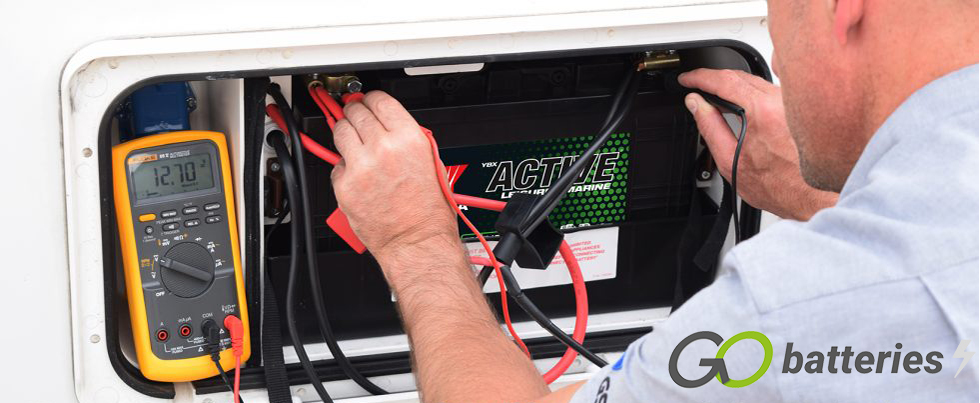
How To Check and Test a Leisure Battery
It is always good practice to check the level of charge and general health of your leisure batteries, after all, you don’t want to get to your destination only to discover you have no power! On many vehicles (motorhomes, RV’s etc) the voltage can be checked using your on board battery control panel, If you don’t have one or there is a problem then you can use a voltmeter or multi-meter.
Here we will help you understand how to check the charge in your leisure battery using a multi-meter and what other helpful checks you can carry out.
How Many Volts Should a Leisure Battery Have?
A good healthy leisure battery should register between 12.6 to 12.7 volts. Due to the way batteries discharge it’s very important that you test the battery after it has been sitting (not on charge, or being charged through a vehicle split charging system) for at least an hour, in order to get the resting voltage of the battery. Testing the battery just after it has been on charge or being charged through a running vehicle will give an inaccurate reading! The best option would be to leave your battery to rest overnight (turning all systems off) and test the battery the next morning before you start the vehicle or charging the battery again, this would accurately gauge the health of your battery.
Many leisure batteries in motorhomes or RV’s are located under seats or cupboards, if you can’t locate the batteries then please consult the owner’s manual. In most cases the batteries will be encased in a plastic shroud or cover, these will either unclip, lift off or sometimes require unfastening some bolts or screws. Once you can see the battery you may find that the positive terminal has a red cover, this will lift off or pull back to expose the terminal below, you could find a black cover on the negative terminal in some cases, again this should pull back or lift off.
Once both the battery terminals are exposed be extremely careful not touch both of the terminals with anything metal, this will cause a short circuit!
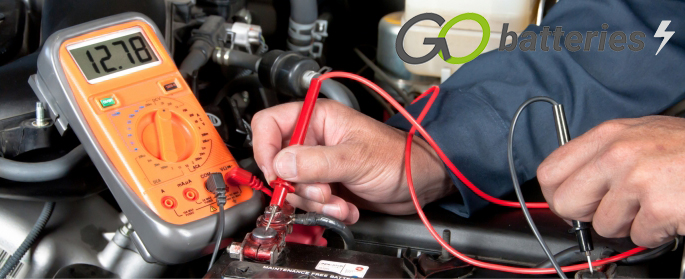
How To Test a Leisure Battery With a Multimeter
You will first want to make sure you have your multi-meter (also known as a digital voltmeter) correctly to measure DC voltage, this is indicated with a dashed line and a solid line and above a letter V. You need to have the dial set to 20 which will accurately measure between 0-20 volts. If the reading blinks when it’s not attached to anything, you may need to replace the multi-meter’s internal battery.
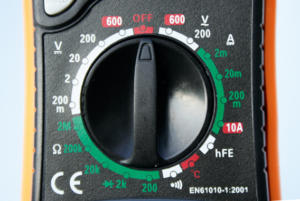
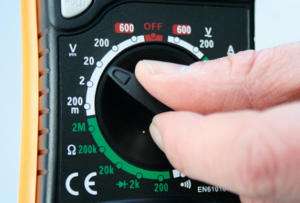
Take the red probe and place this on the positive terminal of the battery, the positive terminal is usually marked red and carries a + symbol. Taking the black probe and likewise place this on the negative terminal of the battery, the negative terminal of the battery is usually marked black and carries a – symbol. The reading for a fully charged battery should read 12.6 to 12.7 volts, some AGM batteries can be 12.8 volts, if you have a reading which is showing -12.6 or -12.7 then you have the probes the wrong way round.
As mentioned previously, a fully charged battery is 12.6 to 12.7 volts and the resting voltage, ideally should be no lower than this. But how does that help us define a half charged or even flat battery? A rule of thumb is that a battery reading 12.4 volts is half charged and a battery reading of 12.2 volts is flat, below 12 volts is classed as discharged and the lower the voltage drops is deep discharge and sulphation will occur. Anything less than 12.4 volts we would recommend placing on an appropriate intelligent battery charger to fully charge.
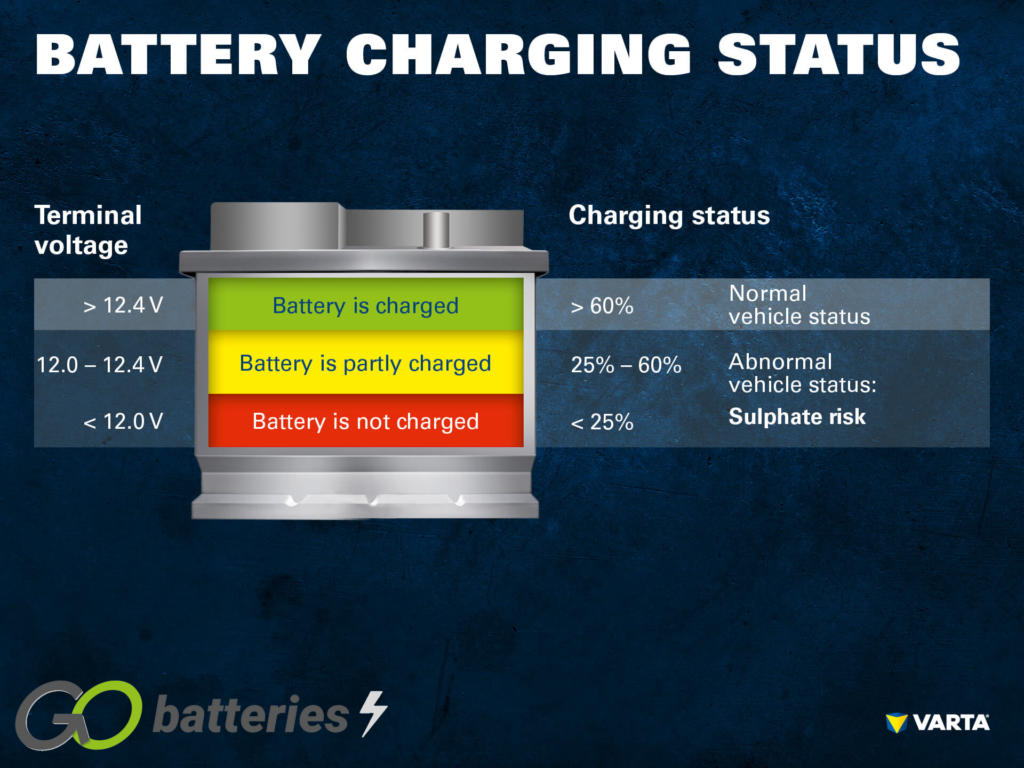
Checking The Charge Level
Most modern caravans or motorhomes have a built-in battery monitor, however some of the older models may not. We recommend checking your battery charge levels with a voltmeter or multi-meter, below we have a quick reference chart to assist your checks.
Prior to taking the readings, ensure all electrical appliances and systems are switched off.
Meter Reading Approximate Charge Level
12.7V or above 100%
12.5V 75%
12.4V 50%
12.2V 25%
12V or less Discharged
